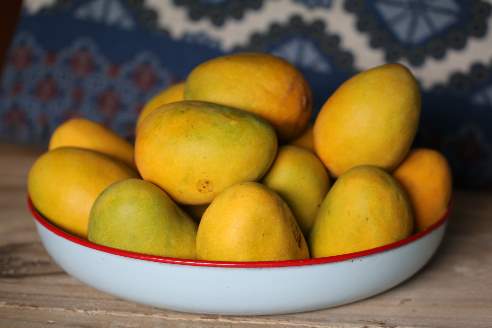Reading time: About 2.5 minutes
Do you regularly eat mangoes? Today I’ll explain why you should massage your mangoes — and, of course, your metaphors.
I bought a new chair recently. This decision was a key part of my ongoing campaign to improve my wretched back. I’m also seeing a personal trainer (thanks so much to the subscriber who recommended him!) and going to a restorative yoga class. As you can probably tell, I’m both motivated and a little bit desperate.
The desperate part comes with the yoga. Although many of my colleagues love yoga and a very good friend of mine is a talented teacher, I’ve never been a huge fan of the exercise. But I decided to be flexible. (Ha ha — a little yoga joke there just to show my heart is in the right place.)
The teacher of the class is lovely but a bit tough. She doesn’t put up with any nonsense — she made me tuck in my shirt last week because she couldn’t see my hips — and she’s quite appalled by my tight hamstrings. Nevertheless, I like the way she explains things clearly and has a sly sense of humour.
Last week she had us sitting on some yoga blocks (think of them like phone books made of foam) and announced, “Have I talked to you about massaging your mangoes?” When we all assured her that she most certainly hadn’t, she proceeded to demonstrate and explain. I was impressed with the exercise and went home to tell my family. But when I announced the name, my teenage girls quickly cast their appraising eyes over me. I could see it in their faces: “Is mom suddenly talking dirty to us?” they pondered. No, actually, I wasn’t.
In the world of yoga, mangoes are your legs. And the exercise, which has you sitting on yoga blocks, with your knees bent and the soles of your feet pressed together (baddha konasana), involves massaging your thighs and calves with your hands. Not a back exercise, granted, but it feels great.
The name comes from a culture in which mangoes are eaten. Apparently, when the fruit is almost but not quite ripe, you can hasten its readiness by gently massaging it. Who knew?
And what, exactly, does this have to do with writing? Well, I think there are five lessons that flow out of this story:
1) Metaphors make things memorable. If my teacher had simply shown us the exercise it probably would have dribbled out of my mind almost immediately. What’s another exercise? Just one in a long list. But give it a memorable name and I remember it.
2) Metaphors relating to things people actually like are effective. While there are undoubtedly readers who abhor mangoes, I suspect they are as few as the people who dislike chocolate. The fruit is so exotic and tasty, even my extra-picky kids gobbled it up when they were toddlers. Mangoes make a much more pleasing metaphor than, say, margarine or Metamucil.
3) Alliteration is a nice touch. The double “m” sound in “massaging your mangoes” is as delicious as the fruit itself.
4) Stories — especially surprising ones — make images super memorable. I’d never before heard of massaging fruit. Didn’t even know it was sensible. Or possible!
5) Surprising stories are ones that people are more eager to share with others. As soon as I heard the story of massaging mangoes, I knew I was going to write about it for this newsletter. And I suspect a good percentage of you will tell your friends or family.
I also guarantee that the next time you see mangoes in the store (or perhaps on a tree if you’re one of my readers in India, Australia or Thailand) you will remember this column. Making writing memorable is a good trick. And sensational metaphors can help you do it.


